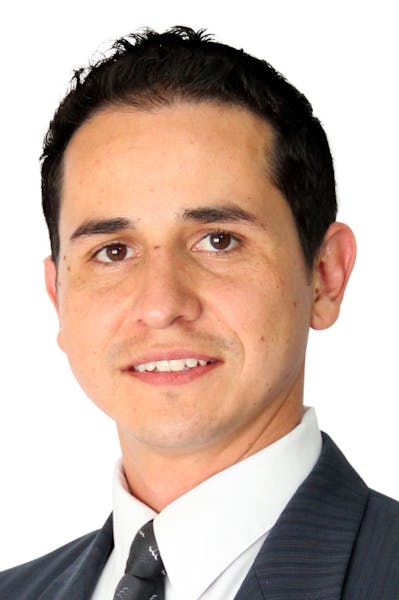In 2010, when the U.S. economy was starting to recover from the Great Recession, the Twin Cities seemed to be faring better than many metropolitan areas. But a study by Algernon Austin, published by the Economic Policy Institute in June 2010, told a different story: The jobless rate for African-Americans was more than three times higher than that of whites. In fact, at over 20 percent, the Twin Cities' rate was second only to Detroit's. Unemployment was also more than twice as high among the Hispanic population.
There were fears that the level of disparity could cause existing businesses to leave Minnesota and prevent new businesses from moving in, according to a Blue-Ribbon Commission on Reducing Racial Employment Disparities formed by Ramsey County in 2011. As baby boomers retired, a lack of new younger workers could limit economic growth. Eventually, a shrinking economy could reduce the quality of life for all Minnesotans.
Many organizations throughout the metro have identified employment equity and disparity reduction as a key mission of their work, according to Deb Bahr-Helgen, Director of Minneapolis Employment and Training within the City of Minneapolis Department of Community Planning and Economic Development. An example of a collaborative effort to bring employment equity forward as one of the state's most pressing social and economic issues is Everybody In, a regional effort to eliminate the disparity gap by connecting the dots for positive change in our region.
Further, new and innovative workforce programs such as Minneapolis TechHire, a collaborative that includes the City of Minneapolis, several training partners and more than 60 employers, is focused on recruiting nontraditional workers into a greater share of the Twin Cities' 200,000 technology jobs. In the pilot year,accelerated programs through PRIME Digital Academy, IT Futures Foundation — IT Ready, and Concordia University's Software Guild graduated 99 individuals who have been placed in full-time positions at an average salary of $45,802, according to the TechHire website.
Everybody In's Executive Director Sam Grant, who joined the organization in 2014, said efforts to improve workplace diversity have been "a whole lot of moving parts not well coordinated." His organization's role, he said, is to act as a "super connector," bringing together the people and programs who are already doing good work with employers and others who want to take the next step but aren't sure how.
"We have a system that incentivizes us to work separately," Grant said. "We need to take a step back and say, 'That's bigger than what I could address on my own — I need to participate in a bigger strategy.' "
A bright spot in the Twin Cities employment scene, Grant said, is significant growth for minority businesses from 2007 to the present. "The business trajectory doesn't match the terrible impact of the foreclosure crisis," Grant said. Minority businesses are "well situated in all industry sectors." Because those firms are more likely to hire diverse employees, "when they grow, so does the job base," Grant said.
When he asks white employers, "What percentage of your employees come from diverse communities?" the initial response can be defensiveness, Grant said. "I'm not here to judge you," Grant tells them. "I know it isn't easy. I want to learn how to be a good ally."
Often, he said, the employer's existing hiring strategy doesn't connect them to diverse populations. "I can make a few connections and move out of the way," Grant said.
"Making the right connections" comes up over and over again as the key strategy. Bahr-Helgen said businesses can foster diversity by "casting an intentional net into diverse communities. Build relationships with organizations that align with the talent you seek" (see sidebar).
Miguel Ramos, director of diversity marketing for the Minnesota Twins, has been building relationships for the past seven years. Through his network, he's able to make sure that job opportunities are made known to people beyond the reach of mainstream media. "You build a network and send the information to them. You share with their communities," he said. "We can't wait for the people to come to the stadium. We need to connect with people in the community with the same vision and passion."
Steve Lilly has developed a passion for inclusion during 13 years as manager of the Staples Distribution Center in Arden Hills. When Lilly first arrived on the job, two workers with developmental disabilities were employed making boxes. "I was really impressed with what the folks could achieve," Lilly said. "They were critical of their own work. They were invested in it."
Today, the Arden Hills distribution center has 29 developmentally disabled workers, who are recruited and supported by TSE Inc. of St. Paul, employed from two to 40 hours a week. The roles range from "full production" positions to "some basic cleaning tasks that are taken to a level above and beyond," Lilly said.
The TSE partnership has had major business benefits, Lilly said. "We haven't been fully staffed in a long while. Without the TSE folks involved in production in all areas, we'd really have struggled to satisfy customers."
In the end, satisfied customers are everyone's goal, Bahr-Helgen said, "The demographics of our communities are changing and so the face of the workplace is changing, as well. As big workforce shortages loom ahead for us as baby boomers retire, intense competition for talent will require employers to shift their hiring and retention practices in order to attract and retain talent. "
In short, diversity is good for the bottom line. "I care about people, so I don't need to talk about that," Ramos said. "This is a business decision. It's about growing the business."
Laura French is a freelance writer based in St. Paul.
